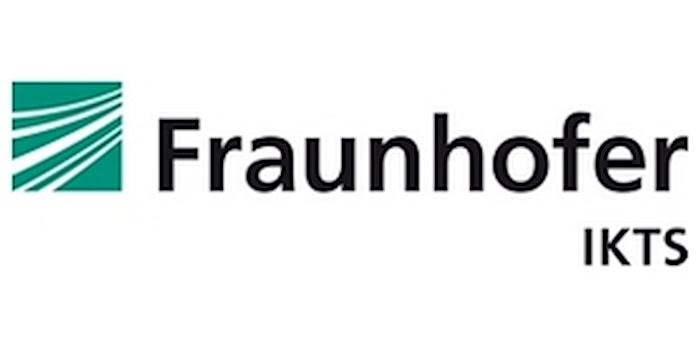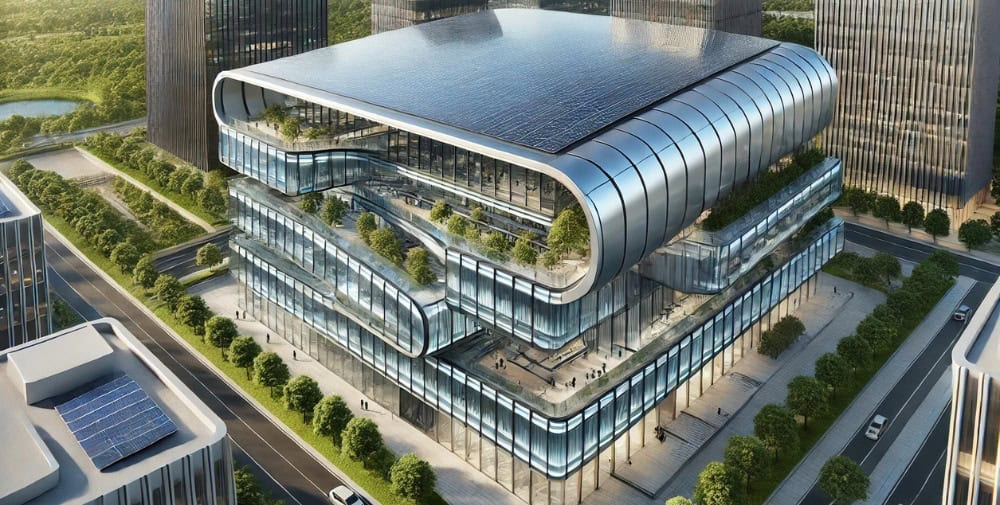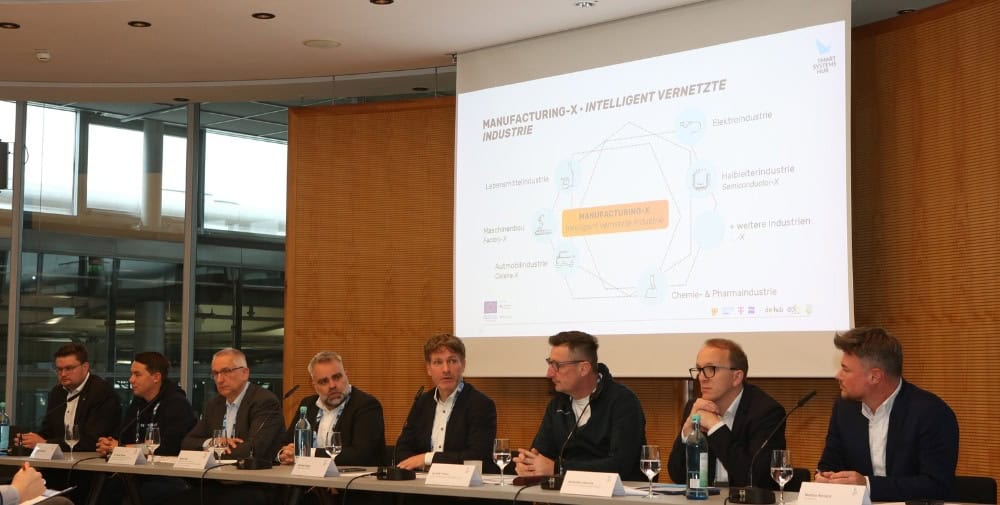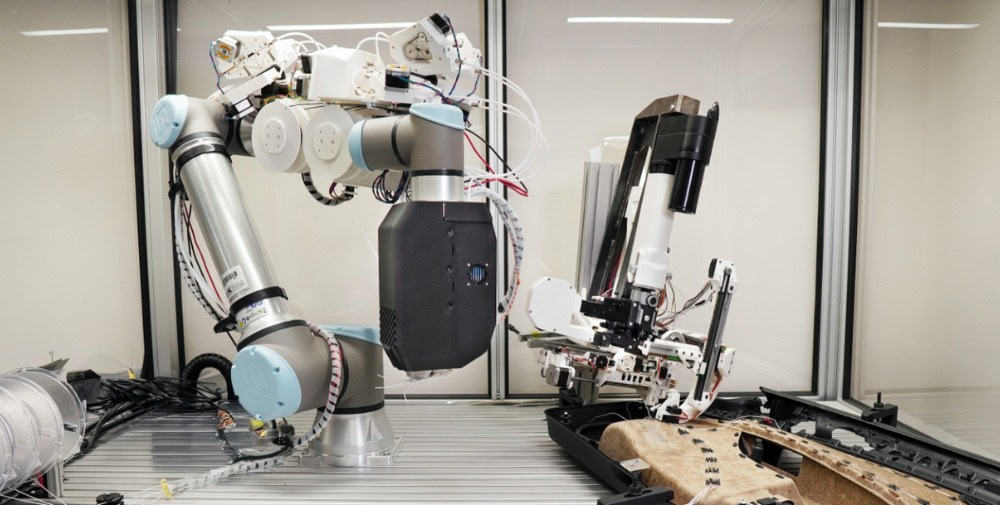November 6, 2024 Sustainable solutions for reducing energy demand and improving the carbon footprint are more in demand than ever in the construction and building sector. In the face of rising energy prices and strict regulations for lower energy consumption in buildings, innovative technologies such as perovskite and organic solar cells offer great potential. However, the cost, durability and efficiency of these solar cells pose a major challenge.

Fraunhofer FEP is developing new coating and process technologies as part of the EU-funded PEARL and BOOSTER projects, which aim to significantly increase the durability and efficiency of solar cells and sustainably reduce costs and material requirements.
The construction and building sector is facing major challenges: Climate change, rising energy prices and stricter regulations require sustainable solutions to reduce the energy requirements of buildings and improve their carbon footprint. Solar energy plays a key role here, especially innovative technologies such as perovskite solar cells. These new types of cells offer great potential for building-integrated photovoltaics, as they are flexible, easy and inexpensive to manufacture and have impressed with enormous advances in efficiency in recent years.
Further efforts are required in terms of durability and stability on the way from laboratory samples to photovoltaic modules that can be used in practice. Flexible organic solar cells also offer great potential for building integration, but there is still room for optimization in the manufacturing processes and with regard to increasing their efficiency and service life. The Fraunhofer Institute for Electron Beam and Plasma Technology FEP is therefore researching new materials and coating technologies as part of the two EU-funded projects PEARL and BOOSTER in order to overcome these challenges and develop components for sustainable, long-lasting solar solutions for the construction and building sector.
As an internationally leading institute for the development of innovative layer systems and coating processes on flexible materials, Fraunhofer FEP makes decisive contributions to the further development of technologies in sheet-to-sheet and roll-to-roll processes with its comprehensive expertise in vacuum coating and plasma technology. These processes are used in a wide variety of industries. The scientists at the Fraunhofer FEP develop customized coatings specifically for the construction and building sector that meet the high requirements for durability, energy efficiency and sustainability.
PEARL – Flexible perovskite solar cells for sustainable energy
As part of the EU-funded PEARL project (grant agreement no. 101122283), Fraunhofer FEP is developing next-generation flexible perovskite solar cells together with international partners under the coordination of the Finnish VTT Technical Research Center Ltd. Over the next few years, the researchers in Dresden want to develop a combined permeation barrier with a transparent electrode layer that will significantly improve both the durability and efficiency of the solar cells. This technology makes it possible to reduce production materials and steps, which makes the production of flexible solar cells more cost-efficient and sustainable.
Dr. Christian May explains the focus: “Permeation barrier layers and transparent electrode layers already exist. In the project, we now want to combine both products in order to save film material on the one hand and a process step on the other. This should have a long-term impact on the cost efficiency of manufacturing the products and thus make solar energy more affordable.”
The challenge is to combine the properties of both components – barrier and electrode – in such a way that they do not interfere with each other. The application and structuring of the electrode must not affect the barrier effect and, conversely, the function of the electrode must not be restricted. The Fraunhofer FEP’s know-how in the field of vacuum coating processes and the influences on barrier properties is of decisive importance here. Initial results have already been achieved on the coFlex in-line vacuum coating system for roll-to-roll coating.
“The PEARL project offers us the opportunity to significantly advance the development of perovskite solar cells. By combining barrier and electrode layers, we are creating the basis for a high-performance, stable and cost-efficient solar technology of the future,” summarizes Dr. Christian May.
BOOSTER – Organic photovoltaics for the building sector
The EU-funded BOOSTER project (grant agreement no. 952911) focuses on the development of organic photovoltaic modules (OPV), which are particularly suitable for building applications such as building-integrated photovoltaics.
OPV is a technology that addresses the problem of global energy production with an environmentally friendly approach. The production of OPV modules is characterized by a low energy payback time and uses resources that are abundant, easily accessible and non-toxic. In addition, organic photovoltaic modules are lightweight and highly flexible, which makes them ideal for use on buildings, especially on curved surfaces and in a vertical direction.
Much progress has also recently been made in their performance through the development of new materials that are processed in printing processes. The BOOSTER project aims to further develop this OPV technology so that the first demonstrators can be realized and used and tested under real conditions. Efficiency and service life are to be increased and costs reduced at the same time. Specifically, at the end of the project, three different demonstrators are to be integrated at locations in Germany and Italy in order to investigate their efficiency under real conditions in the final year of the project.
As part of the project, Fraunhofer FEP is developing a highly transparent and durable front side encapsulation film (frontsheet) that protects the OPV modules from UV radiation and moisture. This protective layer is crucial for the service life of the modules, as the efficiency of the solar cells depends largely on the transparency of the frontsheet.
Patrick Schlenz, project manager of the BOOSTER project at Fraunhofer FEP, explains: “With BOOSTER, we are working on improving the service life and efficiency of OPV modules under real outdoor conditions. With our expertise in the development of special coating systems, e.g. as a permeation barrier or to achieve special optical properties, and in process development for the coating of flexible films, we are addressing various issues in the project. Specifically, we are implementing a solution that meets the requirements for barrier layers for OPV and at the same time offers advantages in terms of optical properties compared to the state-of-the-art material.”
As a result, the researchers at Fraunhofer FEP want to develop a film substrate that not only offers better protection against environmental pollution from the barrier layer, but also increases transparency. This in turn increases the efficiency of the modules. Initial results have already been achieved on processed OPV modules in the project: Lifetimes of over 4000 hours under accelerated ageing conditions, i.e. at an increased temperature of 85 °C and increased humidity of 85 %r.h., have been demonstrated by the researchers. An increase in the transparency properties of the films from 85% to 90% was also achieved.
In addition, the project partners in BOOSTER are focusing on developing a production concept for the OPV modules that offers efficient coating at low cost. To this end, a roll-to-roll production line is being optimized and work is being done on scaling all materials and processes for such production. At the end of the project, an OPV module including the process technologies should be available that can be used and transferred by future manufacturers of flexible solar cells or other optoelectronic components.
The presented technologies and results as well as possible applications of thin-film technologies in the construction and building sector will be presented at the Fraunhofer joint stand (Hall C2, Stand 528) at the BAU 2025 trade fair from January 13 to 17, 2025. There, interested visitors can learn more about the innovative solar cell development technologies and find out about the potential applications of perovskite and OPV technologies in the construction and building sector.
_ _ _ _ _ _
About the PEARL and BOOSTER projects
PEARL – Flexible perovskite solar cells with carbon electrodes
- Project duration: October 1, 2023 – September 30, 2026
- Funding: European Union’s “Horizon Europe” research and innovation program under the funding code 101122283
- Further information: www.pearl-project.eu
BOOSTER – Boost of organic solar technologies for European radiance
- Project duration: September 1, 2020 – February 28, 2027
- Funding: European Union research and innovation program “Horizon Europe 2020” under grant number 952911
_ _ _ _ _ _
Further links
👉 www.booster-opv.eu
Image: Fraunhofer FEP, generated with AI
_ _ _ _ _
Note to the text
This is an automatic translation with DeepL.com. Read the original text in German.




